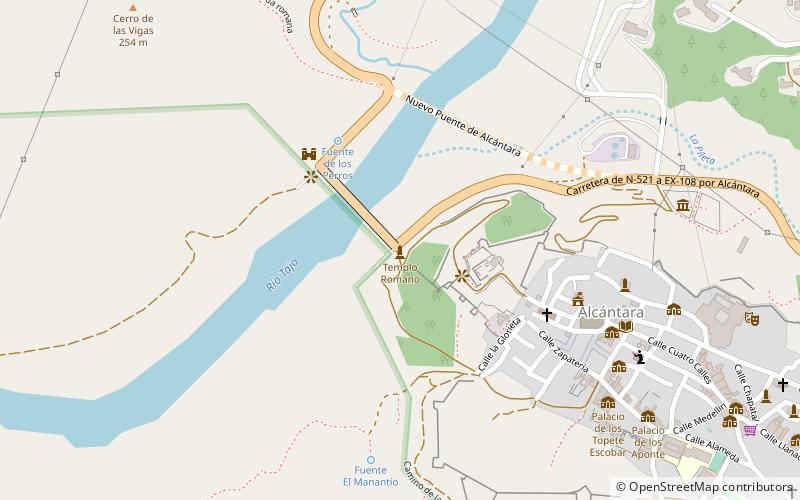Roman temple of Alcántara


Facts and practical information
Nestled in the picturesque landscape of Extremadura, Spain, the Roman temple of Alcántara stands as a testament to the engineering and architectural prowess of ancient Rome. This historical edifice, though not as colossal as other Roman temples, carries a unique charm and significance that attract scholars and tourists alike.
The temple was constructed in the 2nd century AD and was dedicated to the Roman deities Jupiter, Juno, and Minerva. Its purpose was not only religious but also to commemorate the construction of the nearby Alcántara Bridge, a marvel of Roman engineering that spans the Tagus River. The temple's location was strategic, marking the bridge as a symbol of Rome's influence and the gateway to the province of Lusitania.
The temple's design is characteristic of Roman architecture, with its rectangular podium and a flight of steps leading to the pronaos, or portico. Although the passage of time and historical upheavals have left their marks, the temple's Corinthian columns and the partial remains of its cella still evoke the grandeur of the Roman Empire.
Extremadura
Roman temple of Alcántara – popular in the area (distance from the attraction)
Nearby attractions include: Alcántara Bridge, San Benito de Alcántara.


